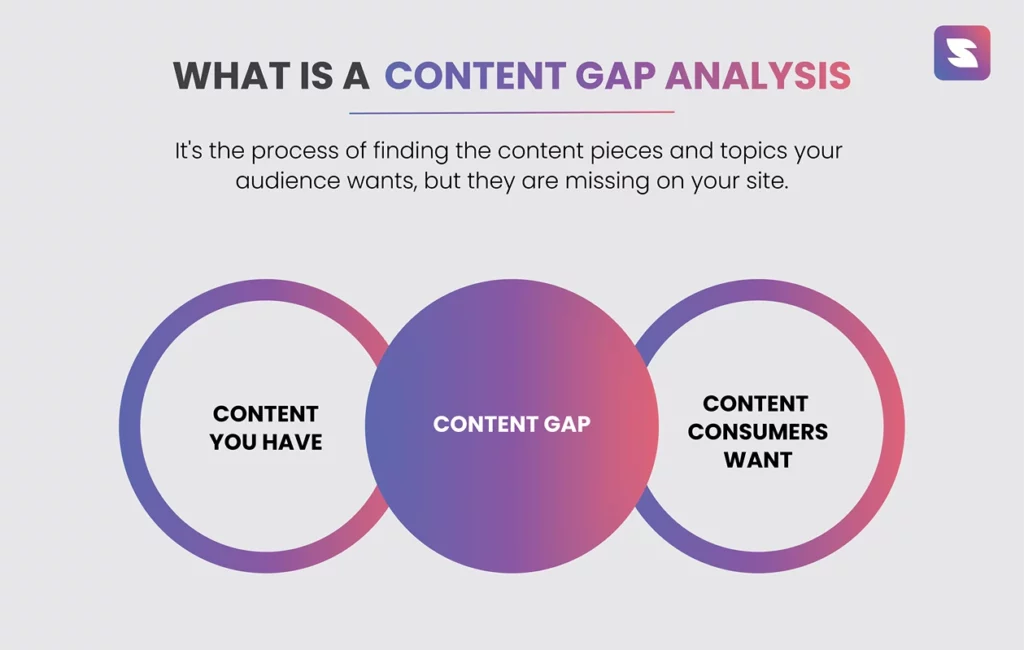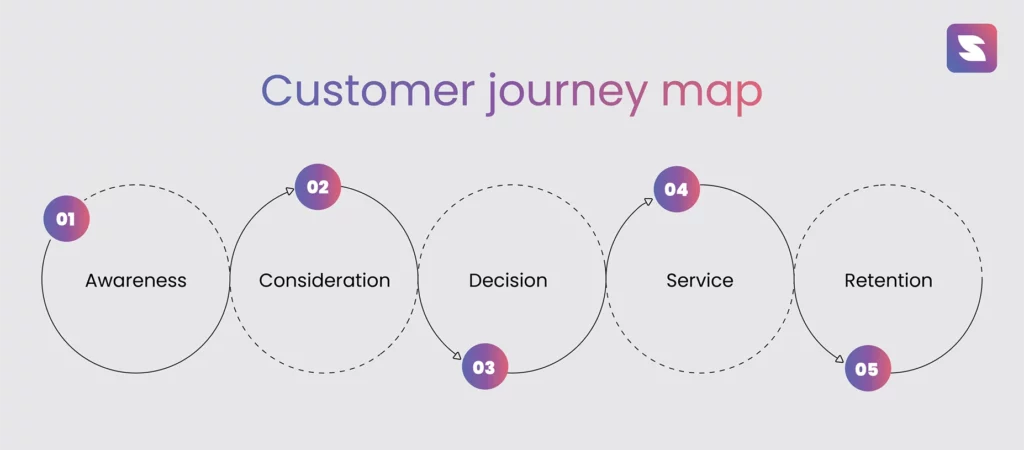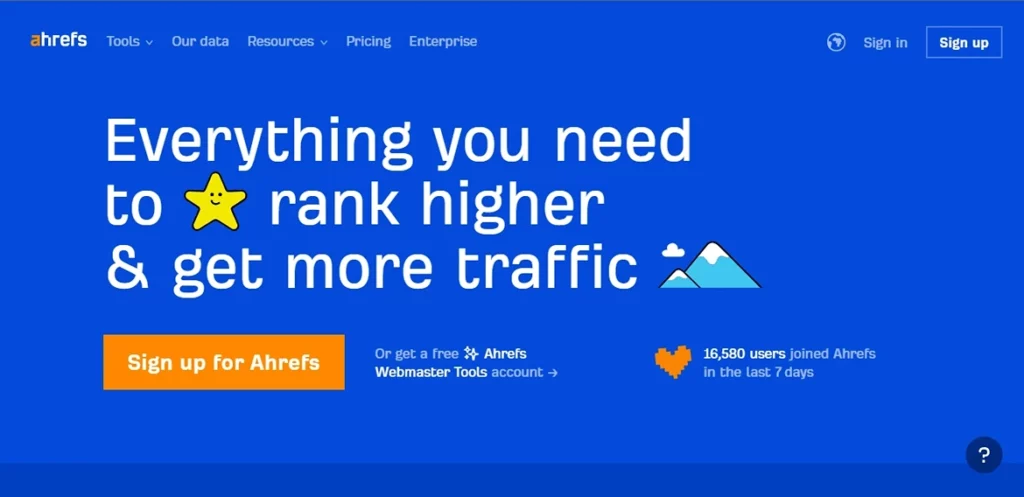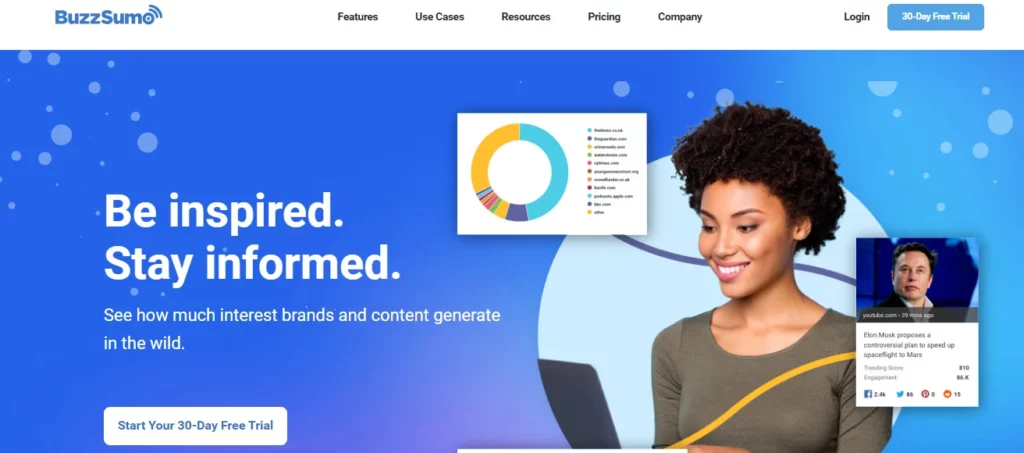Only $99 for a full year!
No credit card required
Rank on Google's first page in 3 months
Complete Guide on Content Gap Analysis: Strategies & Tools
Oct 24, 2024 | user
Have you ever wondered why some blogs soar to the top of Google searches while others struggle to be noticed? It might not be as complicated as you think.
Recent studies suggest that a staggering 90% of content doesn’t receive traffic from Google, underscoring the fierce competition and the critical need for a strategic edge. That edge could be a thorough ‘content gap analysis.’
It’s like a treasure map for your content. It shows you the missing pieces that readers are eagerly searching for. By filling these gaps, you not only boost your blog’s visibility but also connect more meaningfully with your audience.
In this post, you’ll learn about content gap analysis, strategies for conducting it, and the best content gap analysis tools.
What Is Content Gap Analysis?

Content gap analysis is a method used in SEO (Search Engine Optimization) and content marketing. It helps you find what’s missing in your content strategy, which is something your audience wants but can’t find on your website.
You compare your content to your competitors to spot topics, keywords, and content types you haven’t used yet but could attract more visitors and engagement. This not only shows where your content lacks but also reveals opportunities to improve and grow.
This strategy boosts your business in many ways, such as making your site more visible, attracting more of the right visitors, and strengthening your content strategy.
What Are The 3 Fundamental Components Of Content Gap Analysis?
A content gap analysis involves a complete evaluation of existing content against particular goals to identify opportunities. Here are the main components that come in a content gap analysis.
a. Content Audit
A content audit is a critical component in content gap analysis. A thorough content audit and proper inventory of all the existing content on your website are needed. In this content auditing, you can categorize content based on different formats like blogs, video content, infographics, and all. This complete audit helps you know the strengths and weaknesses of your content on the website.
b. Content Gap Identification
The next component is content gap identification and content gap analysis. In this stage, all the content is compared against the audience’s preferences, SEO goals, and business objectives. Analysing these gaps helps in getting content that might be outdated, lacking, or not aligned with the audience.
c. Strategy Development and Implementation
After sorting out the content gaps, the third component will be the strategic plan to address the issues effectively. In this stage, they identify the gaps based on the significance and features covered in the content audit and sort the required strategies. The strategies will be content creation, optimization, repurposing existing content, or setting up new formats for the content. Also, in this stage, they will create a complete roadmap for establishing correct content creation by setting up all the content gaps.
Different Kinds Of Content Gaps
Understanding and identifying the various types of content gaps is crucial for enhancing your website’s performance and user experience.
i. Topical Gaps
These gaps occur when your content does not cover specific topics or keywords that your target audience is searching for. Missing out on these topics can lead to missed opportunities for attracting traffic, as your content does not meet the specific informational needs of your audience.
ii. Format Gaps
Format gaps arise when your content is not presented in the format preferred by your audience or favored by search engines for specific queries (e.g., text, video, infographics).
Even if your content is topically relevant, the wrong format can lead to poor engagement and bounce rates, as it may not align with user expectations or search intent. This misalignment can negatively affect your SEO performance and user satisfaction.
iii. Quality Gaps
Quality gaps refer to content that lacks depth, accuracy, or value compared to competing content on the same topics.
High-quality content is a cornerstone of good SEO. Content that falls short in quality can lead to decreased user engagement, lower dwell time, and, ultimately, a drop in rankings. Search engines prioritize quality content that provides the best answer to users’ queries, making quality a non-negotiable aspect of your content strategy.
iv. Freshness Gaps
These gaps are present when content is outdated or not regularly updated to reflect the latest information, trends, or data.
Freshness is a known ranking factor for many search engines, including Google. Outdated content will decrease in rankings as it may be perceived as less relevant or helpful to users. Regular updates and refreshes can boost your SEO performance and keep your audience engaged.
v. Authority Gaps
Authority gaps happen when content lacks the expertise, credibility, and trustworthiness (E-A-T) that search engines and users look for in certain topics.
This is especially important for topics where trust is crucial, like health, finance, and legal advice. If content doesn’t show enough authority, it might not rank well in search results. To fix these gaps, it’s important to create high-quality content that shows your knowledge and trustworthiness.
By regularly auditing your content for these gaps and implementing targeted improvements, you can enhance and achieve higher rankings on website pages. The goal is to create content that is not only found but also valued and trusted by your audience.
Step-By-Step Guide To Performing Content Gap Analysis
By using a strategic method of content gap analysis, you can measure your content against your competitors.
This way, you can pinpoint the blogs, keywords, or content types missing from your site that your audience is looking for. Here are the strategic steps that you can follow to complete content gap analysis.
1. Start with Defining Your Goals
Begin by clarifying your content objectives. Clearly defined goals serve as a guide, helping you to identify where your content strategy needs the most attention.

Your customer journey mainly consists of stages like awareness, consideration, decision, service, and retention. You have to make sure that your buyer goes through all these stages and makes a purchase.
- Awareness Stage
In this stage, your customers are just beginning to recognize they have a problem or need, but they might not fully understand the situation.
So, your website content must aim to educate the readers on how to solve their problems. You can make blog posts, videos, or infographics.
- Consideration
After the customer knows their problem, the next step is to search for a solution. So, at this stage, your content must showcase the solution to their problem. Keep in mind that you don’t have to be overly sales-focused at this stage.
You can use comparison guides, case studies, and detailed guides to understand the customer. You have to address their specific needs at this stage.
- Decision
The next step is for the customer to be ready to make a purchase, but they require the final decision-making move. So you can reassure your customers by giving them trust in your product.
You can make product demos, customer testimonials, and product descriptions with clear benefits of your solution.
- Service
After the customer makes the purchase, you have to continue the journey. In this phase, you have to assure customer satisfaction and solve any issues that arise post-purchase.
You can offer them by creating FAQs, support guides, and how-to videos for aftercare.
- Retention
This is the final stage of your customer journey. You have to focus on the customer and ensure they are coming back. It’s a long-term business success. So, always make sure your content provides value by keeping your brand in mind.
Create content like big offers, programs, and quality newsletters. You can add product highlights and features to this content. It will be engaging and effective in your buyers’ long-term journey.
2. Conduct a Thorough Content Audit
The next step is to review your current content carefully. Organize your material by topics, types (such as blog posts, videos, infographics), and performance.
Tools like SuiteJar or Ahrefs can provide valuable insights into how your content is performing and where it may be lacking. A comprehensive audit involves setting benchmarks, analyzing the data, refining your strategy, and ensuring your content is accessible and of high quality.
Offering a diverse range of content formats tailored to your audience’s preferences can significantly boost your SEO efforts.
3. Engage in Competitor Analysis
Analyzing your competitors is essential in content gap analysis. Identify who is ranking well for your target keywords and has a solid online presence in your niche.
Examine their content strategy, focusing on the topics they cover, the variety of content they produce, and how they engage with their audience.
This analysis will help you understand what your competitors are doing right. Look for topics you haven’t covered, content formats you haven’t used, and keywords you’re not targeting. This step can also give you opportunities to improve the quality and depth of your content, which could lead to increased traffic and engagement. Tools like Ahrefs or SEMrush are helpful for this kind of analysis.
4. Identify Content Opportunities
Using the insights from your analysis, pinpoint where your content is falling short.
These gaps could be topics your competitors are covering that you aren’t, new content formats you could adopt, or keywords. Evaluating the depth or quality of your content could be enhanced to serve your audience better and attract more engagement.
Consider asking questions like:
- Which topics are missing from our content?
- What are the key areas our content has not yet addressed?
When is the right time to conduct a content gap analysis?
There is no specific time frame for conducting a content gap analysis. However, it can be done periodically, such as once a quarter or twice a year, to stay updated with your audience’s changing trends and preferences.
By working through these steps, you can identify and fill the content gap analysis in your content strategy. This will improve engagement, improve rankings, and maintain a professional tone.
Best Content Gap Analysis Tools in 2024
Content gap analysis tools help find ways to make your website’s content strategy better. Here are some of the best content gap analysis tools to consider:
1. SuiteJar

SuiteJar is a leading content marketing and SEO tool, designed with advanced features to enhance your website. You will be able to perform a content gap analysis using features such as content optimization, easy web analytics as well as AI-driven content calendar generator as a bonus. All of these factors will contribute to the best results and the clearest definition of the content-related issues.
Content Optimizer
The Content Optimizer feature helps boost your website’s rankings by identifying pages with the potential to reach Google’s first page.

The feature will show you the page, including its title, position, organic traffic, and indexed keywords.
Content Calendar Generator
With SuiteJar’s AI-powered Content Calendar Generator feature, you can effortlessly generate monthly or quarterly content calendars for your website. It helps you discover topic ideas for blogs, webpages, and whitepapers while suggesting pillar and cluster keywords tailored to your client’s ICP. The topics are backed by thorough competitor analysis, ensuring you get the most effective results in seconds with a content calendar generator.

2. Ahrefs

Ahrefs allows you to compare your website’s keywords and topics with those of your competitors. This can help you identify areas where you are falling behind and improve your content strategy to stay ahead of the competition.
Ahrefs also offers a feature called ‘Top Pages’ that shows you the highest-performing pages on your website in terms of traffic and backlinks. This information can be used to analyze and optimize these pages further for even better performance.
3. BuzzSumo

The tool is known for its content discovery capabilities. BuzzSumo offers a feature that allows you to see what type of content your competitors are creating and how it performs. This can help you identify content gaps in your strategy and fill them with relevant and engaging content.
Picking the Right SEO Tool Is the Winning Strategy
Even after setting up your content according to the content gap analysis, optimizing your website pages is important to achieving first-page rankings on Google.
A content optimizer tool like SuiteJar can help simplify this process. SuiteJar provides insights to identify the web pages with the highest potential to rank in SERPs, eliminating the need for manual searches. With these insights, you can focus your efforts more effectively. Also, the tool offers an content calendar generator, allowing you to quickly organize ideas and update content in seconds.

FAQs
1. What is content gap analysis?
Content gap analysis identifies underperforming content on a website that is compared to the competitors or current market trends.
2. How do we find a content gap?
To find a content gap, check what topics your competitors cover that you need to. Also, you can use content gap analysis tools to spot areas where your content could be stronger or where you’re missing out on key topics.
3. What are the best tools for content gap analysis?
There are many SEO tools that can help with content gap analysis, such as Ahrefs, SEMrush, and Buzzsumo. You can select the one that best suits your requirements and has the features you need.
